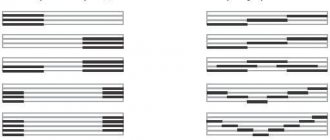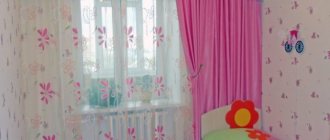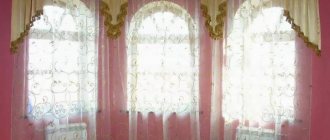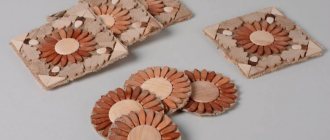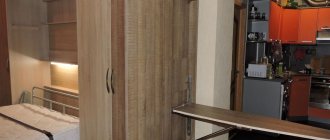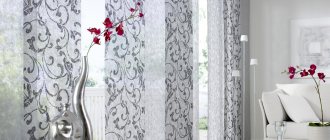Reads: 848
Reading time: 7 min.
no comments
If you love the most original things, then patchwork is for you. In such an outfit it is simply impossible to go unnoticed - patchwork clothing ideas for women become the very highlight that must certainly be in the image.
Don’t think that patchwork is only appropriate for outrageous looks or is only suitable for bohemians. Items made from scraps can harmoniously fit into a rather discreet outfit for every day.
What is patchwork
Craftsmen call patchwork many types of needlework, in which diverse parts are combined into one finished product. If we limit ourselves to wardrobe items, then patchwork is a technique for creating a canvas from individual flaps. From such fabric you can cut and sew a thing of any style.
There are several types of patchwork:
- Traditional or English, which uses flaps of the same size and shape.
- Сrazy (translated as “crazy”) - here randomly shaped flaps are sewn together, creating fancy ornaments (often the crazy technique involves joining parts with a zigzag seam and additional decoration of products with beads and seed beads).
- Quilting – bedspreads and blankets are often made using this technique; the products are supplemented with lining and insulation; outerwear is often found using the quilting technique.
- Knitted patchwork - not scraps of fabric are used, but knitted motifs specially created for a specific idea.
- Japanese patchwork - thematic images, most often landscapes, are made from multi-colored patches.
- Imitation is a product made of printed fabric that imitates patchwork.
The advantage of patchwork sewing is that an ultra-fashionable item can be sewn from almost nothing by cutting old clothes, bed linen, and leftover fabric into pieces. Let's see how to properly combine patchwork items with other details of the image, and evaluate fashionable couture solutions.
What do you need to prepare for work?
Sewing a jacket in a patchwork style is not a difficult job if you do it in accordance with certain rules and a certain algorithm. First you need to prepare the necessary materials and tools, so as not to be distracted from the creative process. You will need:
- scraps of fabric;
- fabric for lining;
- metal punched buttons for denim (although you can use regular shank or hole buttons);
- threads for matching stitching;
- threads for contrasting finishing;
- sewing machine;
- special needle for double stitch;
- simple jacket pattern (you can use an old jacket of a suitable size, carefully cutting it along the seams and ironing all the resulting parts.
Fashion brands
Famous brands and fashion houses actively promote patchwork and regularly demonstrate such models as part of ready-to-wear and even haute couture shows.
The photo shows a patchwork style in denim from the Tom Ford brand collection in the form of light flared trousers. You can make this model yourself using parts from 2-3 pairs of old jeans:
The Chloe brand presented the public with a light chiffon midi skirt, made from large fragments of material with completely different prints.
Missoni uses details with geometric patterns, combining them into semi-classic jackets and trousers. Things look discreet thanks to the harmoniously selected colors:
Givenchy offers fashionistas a sweater in dark blue shades made from knitted squares:
Sportmax have released a bright sweatshirt made from scraps of knitwear and footer in different sizes.
The composition looks unified thanks to the monochromatic elastic cuffs and the same elastic along the bottom edge of the product. The elastic band acts as a frame that holds all the variety of flaps inside.
Of course, not all the looks you see on the catwalk need to be replicated exactly. Fashion designers boldly combine several patchwork style items in one set, completely different in theme. In life, it is best to wear patchwork items with items of restrained style and neutral shades.
Coat
A patchwork-style coat is a rather impressive-sized product, so it should be complemented with the most modest elements possible. If you do not want to distort the proportions of the silhouette, choose something sewn from small scraps. Large blocks arranged asymmetrically are suitable for fashionistas with a curvy or disproportionate figure.
Wear a multi-colored oversized cocoon coat with dark gray skinny jeans and black low-top boots. Accessories include a knitted beanie hat and a black tote bag.
A long coat made of patchwork with a variety of prints can be worn with a white shirt or blouse and boots that match one of the colors present on the coat.
A cropped coat made of fluffy patches in pastel shades can be worn with a plain cloche hat and knee-high boots with a tight top.
Wear a patchwork coat reminiscent of a blanket or plaid with simple pale blue jeans and taupe chunky boots.
A coat in a single color scheme can be complemented with a thin, monochromatic but bright scarf or neckerchief, while shoes and bags should be in neutral colors that are not conspicuous and act as a background.
This coat does not go well with all things; choose the most discreet tones, plain materials, and discreet styles. The coat will be the central element of the image; it is already a spectacular product; you should not overload the look with additional details or prints.
Dress
Dresses in the patchwork style are presented in both boho-style models and more traditional solutions. These can be summer light sundresses or insulated options that can be worn with turtlenecks and various jackets.
This sleeveless sheath dress, which uses patches of white, black and cocoa au lait, can be worn over a crisp white turtleneck, paired with black heeled ankle boots and a creamy neutral handbag.
Accessorize a light flared dress with a belt with ¾-length midi sleeves with maximally open sandals and a straw hat.
Wear a fitted warm sundress in red-brown tones with a white shirt and boots the color of dark chocolate.
Pair this boho dress with crochet motifs with Indian-inspired sandals, lots of bangles and a woven handbag.
Shortened dress models can be safely worn with over the knee boots and stocking boots, and there is no need to hide part of the dress under a jacket.
A flared, lightweight sundress can be used as a skirt by wearing a loose, waist-length denim polo blouse over it. With this outfit, you can try on white sneakers or sneakers.
If a patchwork dress seems too bold to you, choose or sew a model in which only a few details are sewn from scraps. For example, the skirt of a dress can be plain, and the upper part can be made of patches or vice versa. Sleeves or even arbitrary inserts of different sizes can be made from the flaps.
What to wear with patchwork clothes
Creating new clothing items from old or unwanted material is a completely rational idea. Since sustainability is a hot topic in the fashion industry, many brands are looking for ways to produce the eco-friendly clothing that celebrities love. Gluing old scraps of fabric together is one easy way. Patchwork style clothing gives a vintage and modern feel at the same time. And the unique manner of placing various pieces of fabric gives the image a unique personality.
The mosaic principle in everyday looks remains popular and relevant, but how to wear this fashion trend and what to combine it with to look harmonious? Here you need to follow the rule of one thing. This means that patchwork clothes should be one of your outfits. Complement it with things in neutral colors and simple styles. Bright accessories are out of place here; there is a danger that they will overload your look. Patchwork fits most harmoniously into boho-chic, casual and ethnic styles.
Do you like contrasts? Then cozy patchwork sweaters will become your new fall favorites. A little bulky, they'll envelop you in warmth, like the patchwork quilt that inspired this trend. While it’s warm outside, you can try on a thin blouse for a walk, which combines different color shades.
A warm shirt is an indispensable thing for girls in the fall, and made from strict monochrome patches gives a special zest to its owner.
A-line skirts made of equal geometric pieces will give you a flawless office look, especially with a blouse that follows the main tone.
With its bold visual impact, patchwork is a trend that won't go unnoticed. Especially if you add outerwear made from scraps to your wardrobe, which creates the perfect fall look. Corduroy and denim go well with jeans, and wear noble leather with a skirt or culottes.
If you haven’t yet decided on the runway version of patchwork-style clothing, pay attention to outfits that only imitate this technique.
Vests
The main rule for combining a patchwork vest with other details of the image is that the top should be plain. It can be a turtleneck, shirt, blouse, T-shirt, thin pullover and even a sleeveless T-shirt. In the case of a T-shirt, T-shirt or knitted long sleeve, a compact print on the chest is allowed, provided that the vest is made from not too colorful patches.
Vests made from patches come in different styles - straight, elongated, shortened like a bolero, fitted for office or even below the knee, made of light flowing fabric. Some vests can be worn as a blouse or sundress directly over underwear. Thin elongated models can be complemented with a belt - thin and barely noticeable or, on the contrary, wide and standing out against the background of ripples of flaps.
Similar rules apply to patchwork skirts and trousers - all shirts and tops must be plain. If you are wearing a knitted item like a sweater or jumper, make sure there are no large voluminous patterns. Even a plain item with large braids or “bumps” knitted on it may turn out to be too rich and unsuitable for proximity to a product made from patches.
0 Comments
Beginning of work
In order to start sewing a jacket in a patchwork style, especially since you have most likely never engaged in this type of creativity, you need to connect individual scraps into panels. You will need several of them: for the back, for two shelves, for two sleeves, for the collar, two pockets and a belt. Arrange the scraps on the table so that they form a harmonious pattern with each other and fit well together if they do not have a strict geometric shape. Sew the panels, steam each seam thoroughly. You can carefully trim the corners at the joints of the flaps so that there are no strong thickenings.

